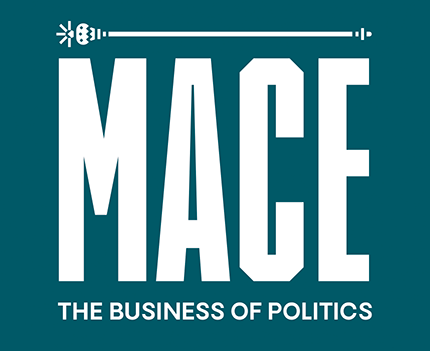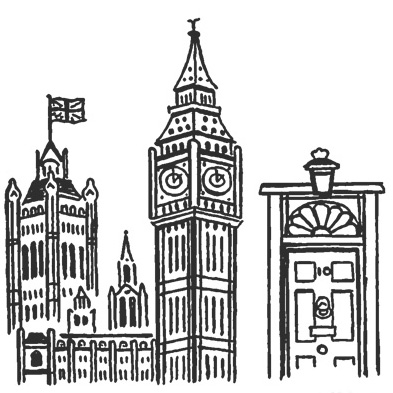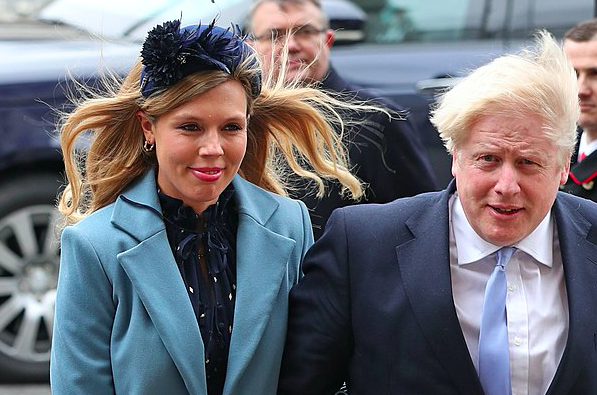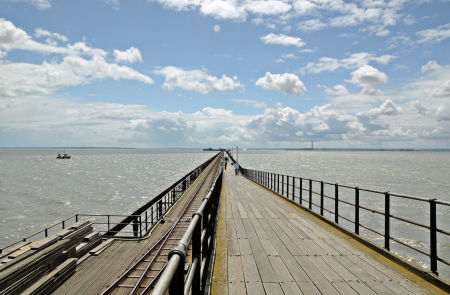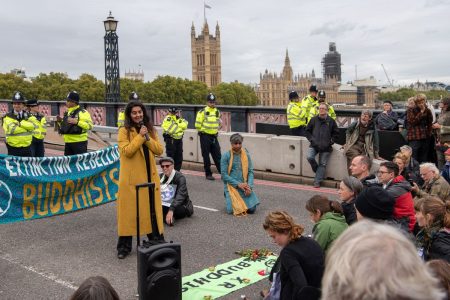Style in Westminster is an odd phenomenon. For some of the most visible people in the world, what they wear is often overlooked (rightly) for the political decisions they take and the convictions they hold.
But what is fashion’s role in the corridors of power? And does it really matter what you wear when you’re jostling for influence in such a volatile and superficial environment? The short answer is yes – of course, it does.
When working as an adviser in Westminster, it is always amusing to see the fresh blood arriving into the House of Commons after recess or a General Election. New MPs and their staffers alike must choose their style of dressing in a matter of days. For MPs, it can go one of two ways – either they arrive with a wardrobe that screams “I own the entire West Wing boxset on DVD” or, for MPs who come from more humble backgrounds, it’s simply whatever they could afford to put on their already eye-wateringly high credit card statements.
One such MP, who had just won a hotly contested by-election, remarked to me that she was in so much debt from her campaign she could only afford to purchase one smart dress for her first week in parliament. She simply hoped to disguise it with various coats so her more affluent colleagues wouldn’t notice.
For many, fashion in Westminster can be as much a tool of oppression as it is one of expression. The class divide between politicians and their staffers alike is easily seen in the clothes they wear. How you dress is just as important as what you wear. How would a young man from Warrington know that a shirt from a packet with a pocket on the chest is a clear indication of class? How is a young woman from Hull to know that a dress showing both chest and legs is considered as gauche as can be?
Former MP for Ashfield Gloria De Piero notes that she would wear a “dress or pencil skirt with a blouse and always heels though the height of my heels is reducing with my age.” De Piero says “I come from a working-class background and I think it’s a crucial part of your upbringing to dress up and look smart at work. When I went to university, I was really confused that those from well off backgrounds prided themselves on dressing down. It made no sense to me then and I still scratch my head about it now.”
A young male Conservative staffer is often easily spotted around SW1 in a crisp blue suit, which indicates somewhat of a slingshot from St Pauls, Winchester or Eton into Westminster, with a career trajectory to taking their new boss’ seat in a mere matter of years. In the era of Corbyn’s Labour, bright young staffers would arrive with tatty rucksacks covered in badges of any number of student movements, only to find that the old guard looked upon them with such disdain that a hasty trip to Marks and Spencers could potentially repair the worst of the damage inflicted on their first day.
For male politicians entering Westminster for the first time, the need to wear a well-tailored suit in the flagship colours of your party is as much a part of your day one checklist as turning up to the whips office to get the ‘line’ tattooed across your forehead. A ministerial Red Box is as much a style ambition as a political one. The desire to cart one around SW1 like the latest designer handbag makes one do mad, mad things.
For decades men’s style in Westminster was simply an array of suits and Oxford shoes. When parliament is made up of a small section of the elite, the style of politicians ends up being just the style of the upper classes – whichever look was preferred of high society at the time. However, as parliament began to diversify with class, gender, race and age – fashion became a key part in the political convictions of its inhabitants and a way to identify who’s who amongst the Westminster set.
In the era of Cool Britannia, in the 90s, Labour politicians would sport garish t-shirts on their weekends away from London and host questionable celeb-filled parties with the likes of Noel Gallagher, in wide-collared shirts and jaunty suit blazers. Doing away with the establishment and its straight-laced uniforms, what was “in fashion” for politics was to be as far away from the stuffy confines of Westminster as possible.
In a different era of Labour politics, Jeremy Corbyn was lambasted by all sides for his “scruffy” appearances. Former Prime Minister David Cameron famously scathed across the despatch box to Corbyn saying; “put on a proper suit, do up your tie and sing the national anthem” in response to a heckle about his own mother’s opposition to Conservative welfare cuts. Here, Cameron revealed a clear distinction in the classism of fashion. Here are two men, both at the top of their respective political parties, although Corbyn did not attend a school as well-heeled as Cameron’s (Eton College) he was himself a privileged individual. However, although they were both “equal” in one regard, Cameron’s clear disdain for Corbyn’s ambivalence towards his appearance was worthy of such a public rebuke, and it landed well. His MPs guffawed and yelled from the benches behind him. The remark was dripping in classism; a “proper” suit filled the gaps of what Cameron had left unsaid. What was wrong with Corbyn’s appearance was that to the Prime Minister, he looked poor.
Indeed for Cameron, a change of style was a central part of his overhaul of the crusty old-fashioned party he had become the leader of in 2005. Remember when his hairdresser had to deny claims of cronyism when he was awarded an MBE in the New Years Honours list? When Cool Britannia had all but lost its sparkle, David Cameron’s “liberal” Conservative party was hell-bent on clawing back “cool”, with a brand spanking new style of Tory.
A member of the ‘Chipping Norton set’ Cameron and his soon to be chancellor, George Osbourne, represented a break away from traditional conservative values, and style. The well-tailored suits and blue ties remained the same, but Cameron’s off duty style involved polo shirts, slim jeans and trips to Soho Farmhouse. When her husband entered no.10, Samantha Cameron soon hired stylist-cum-aide Isabel Spearman, who once appeared in Tatler’s Little Black Book of most eligible bachelorettes, to turn her into a global ‘First Lady’. A job which Spearman more than delivered in.
When Samantha Cameron was snapped sitting next to Michelle Obama in a newly renovated No.11 Downing Street during the Presidential tour of Britain, she looked every part the glowing wife of a World leader. Samantha Cameron took charge of redecorating the Prime Minister’s flat to a bright, airy and modern apartment fit for any youthful and stylish political couple.
For female politicians, the task of fashion in politics takes a different form. The first decision you must make about your Westminster style is what kind of “woman” you want to be seen as.
Are you going to enter SW1 as glamorous, well-heeled and with perfectly blow-dried hair? Dressed in stilettos and a bodycon, these women are often former TV anchors or businesswomen – who are all too aware of how to perfectly craft their image to suit the needs of their environment. You often see these MPs doing the early morning breakfast round, and as a hungover Westminster staffer, it’s sometimes rather hard to actually differentiate between the presenter and the politician. These are the women who will grace the corridors of power with a designer handbag busting full of junior ministerial papers and Chanel lipsticks. Think of your Esther McVey’s, Gloria de Piero’s, Penny Mordaunts. But don’t underestimate them, the height of their stiletto is no reflection of their ability to politic, and more fool anyone who thinks otherwise.
De Piero, one such former anchor, told me ‘it’s not important to be fashionable, but it is important to look smart. Your constituents deserve the effort.” When I asked her about women being judged on their style in Westminster, she asked ‘Isn’t it the same in every walk of life?’ When I press her on what’s the most important accessory a girl can have in Westminster, she answers simply – ‘her brain’.
For other women in Westminster, the decision to eschew glamour with a firm hand is one that is both strategic and political. To assert oneself in a world of men and suits, one must adapt the femininity of hair and handbags and take on a more ‘professionalised appearance’ to compete as an equal in the space. Margaret Thatcher, of course, is the perfect example, famed as she was for her deliberate style of rigidity and ‘Britishness’ embodied by her two-piece suits and sensibly heeled shoes. At a time when snobbery was rife in politics, Thatcher, daughter of a grocer, adopted the style of the upper-class to assimilate into the highest ranks of power and wealth.
As Prime Minister, her stiff coiffed hair was a near-perfect representation of her beliefs and politics. A walking advert for her convictions – rigid and fixed. Thatcher’s Launer handbag was as synonymous with her political career as Churchill’s cigar or, perhaps, Michael Foot’s disastrous donkey jacket.
Some politicians attempt to straddle both of these positions, often with disastrous results. Theresa May, former Prime Minister of Britain was ridiculed for her love of fashion, by both press and public. Unlike the glamorous politicians whose style is their USP, Theresa May was by all accounts considered a serious politician who looked positively ‘ridiculous’ in her thousand-pound designer trousers. For her critics, she simply could not do both. As the awkward Prime Minister who enjoyed walking holidays in boring destinations like Switzerland (as opposed to Boris Johnson’s glamorous jet-setting holidays to Mustique), she should have dressed in a similarly boring fashion.
Political diarist, Westminster hobnobber and the Mace’s Jackdaw columnist, Marie Le Conte notes that politicians, ‘especially women, must walk a fine line’ with fashion. ‘On the one hand, it is expected of us to look impeccable when working in SW1, but on the other, looking too glamorous or eccentric will make you stand out and not for the right reasons.
The trouble is that, as with many other aspects of life in Westminster, the rules on what one should and shouldn’t wear are entirely unspoken, and you are expected to instinctively know how you should look. This, of course, largely tends to benefit those who come from wealthier backgrounds, and have inhabited spaces similar to parliament before getting into politics.’
On the gender divide, she laments that ‘perhaps unsurprisingly – standards tend to be higher for women than men’. Men can often get away with wearing any old stuff, while most women will wear dresses and high heels around the estate.’
When Boris Johnson entered the race for the Conservative Party leadership, all eyes turned to his younger glamorous partner Carrie Symonds, a well-heeled former Conservative Party director of communications. Johnson, famed for his messy blonde crop of hair and off duty running-gear, had picked a well-known Westminster fashion queen as his partner for his ascent to power. But even for Symonds, a political operator in her own right, claims of her wild partying and ‘short skirts’ were bandied across SW1 as means to discredit her. So much so that when she next appeared beside her partner her famous blonde hair was several shades darker, and her dresses now several inches longer.
Fashion in Westminster is a paradox. To care too deeply about one’s appearance is to suggest that one cares less deeply about the real issues that ‘matter’. As much as style is about projecting power, as with everything else in life, your access to power will always determine how your style is received. For those who can afford it, style can be used as just another extension of their successes, whereas for those who are fighting for influence in a world they are deemed not to belong to, it can be more curse than blessing.
Frances Leach is a former Labour Party advisor who now works in strategic communications in London
